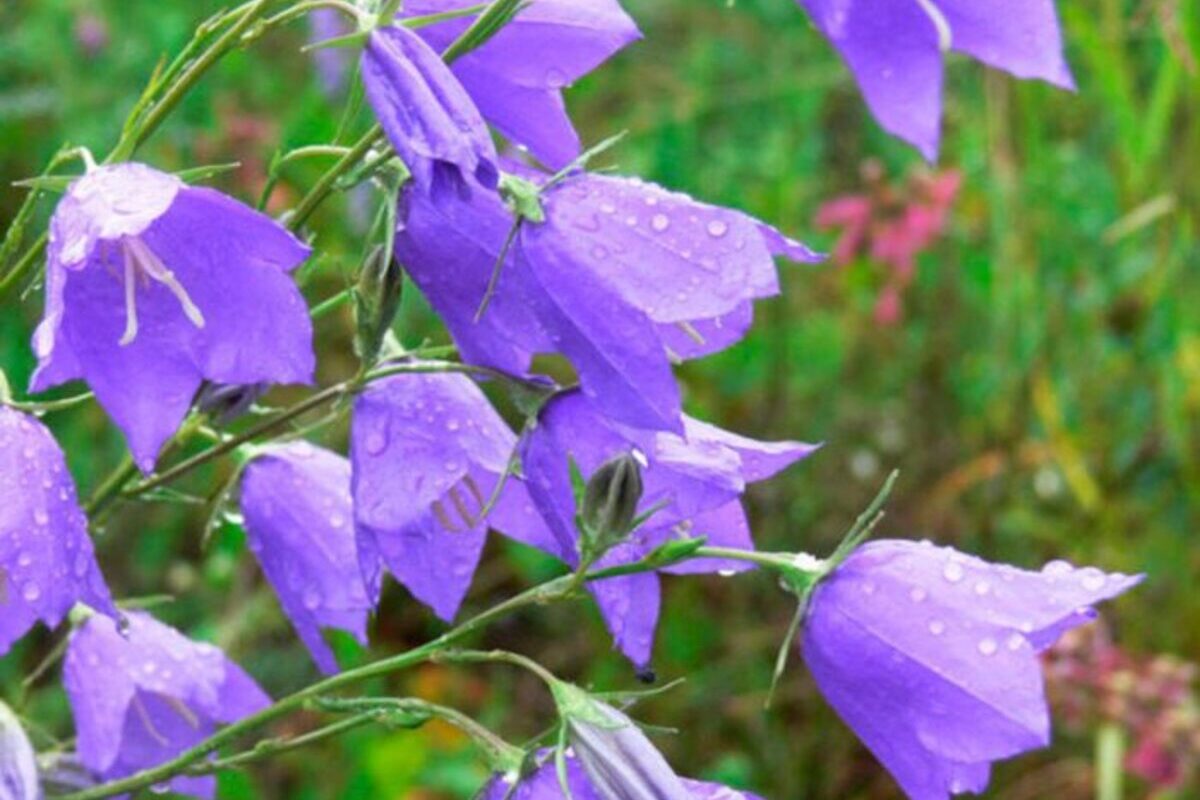Bellflowers are delicate and graceful flowers that have charmed people for centuries with their appearance and melodic name. They are associated with harmony, lightness and fairytale-like landscapes, but behind their apparent simplicity lies a world of fascinating traits. These plants boast a rich history, remarkable biological diversity and unusual characteristics you might not be aware of. They grow in a variety of climates, and some species have become regional symbols or sources of artistic inspiration. Below is a collection of the most interesting and educational facts about these modest yet captivating flowers.
- The name bellflower comes from the Latin word campana, which means small bell. The plant received this name due to the distinctive shape of its flower, which resembles an inverted bell. In many languages this shape has also influenced the name, such as in English bellflower and German Glockenblume. The shape is not only visually appealing but also ideal for pollination by insects.
- There are over 500 species of bellflowers in the world, most of which are native to the temperate zones of the Northern Hemisphere. They are widespread in Europe, Asia, the Caucasus and North America. Some species are endemic and found only in specific countries, which makes them particularly vulnerable to environmental change. Due to their wide variety of forms and shades, bellflowers are commonly used in horticulture and ornamental gardening.
- Bellflowers can adapt to a wide range of growing conditions, from damp meadows to rocky mountain slopes. Many species thrive at altitudes over 2000 meters above sea level. In such areas they often grow in compact clusters, which protects them from wind and cold. This resilience makes them popular among mountaineers and alpine plant enthusiasts.
- While most bellflowers have blue or purple blossoms, there are also varieties with white, pink or even yellowish hues. The color depends on the species, soil composition and climate in which the plant grows. For example, flowers growing in the shade tend to be paler than those in direct sunlight. This variety of colors makes them especially attractive to florists.
- In many folk traditions bellflowers were considered magical plants that protected against evil spirits. In Europe they were sometimes planted near the entrance of a house or in gardens as protective charms. In ancient Slavic beliefs bellflowers were associated with the voices of forest spirits speaking through the flowers. Their quiet and serene presence in nature evoked a sense of harmony with the environment.
- Some species of bellflowers are known for their medicinal properties and have been used in traditional herbal medicine. Infusions made from the leaves were used for treating sore throats or calming the nervous system. Although these uses have limited scientific support, they remain part of regional healing traditions. In some parts of the Caucasus region, the crushed leaves are even added to salads as a source of vitamins.
- Bellflowers remain open throughout the day, but they emit the strongest fragrance in the early morning and evening. This corresponds with the peak activity of pollinators such as bees and bumblebees. Their subtle scent attracts not only insects but also people. In the evening garden they create a soothing and peaceful atmosphere.
- In art bellflowers often symbolize humility, purity and inner peace. They appear in illustrations, tapestries, poetry and music as metaphors for fragility and tenderness. In the works of Roerich, for example, bellflowers represent a spiritual connection between earth and sky. They are also frequently used in wedding decorations and bridal fashion.
- One of the most well-known species is the Carpathian bellflower, which is widely used in landscape design. It features rounded petals in soft violet or white tones and adapts easily to various soil types. This species self-seeds easily, making it low-maintenance and long-lasting in gardens. It is often chosen for rock gardens and flower borders.
- Some bellflower species can be grown indoors if given sufficient light. For instance, Campanula portenschlagiana thrives in pots placed on sunny windowsills. Its bright blue flowers bloom for several months. Indoors this plant brings freshness and natural beauty to the living space.
- Bellflower seeds are very small and light, which allows them to be dispersed easily by the wind. This enables them to colonize new areas without human assistance. At the same time this trait makes them resilient and competitive among other meadow plants. In the wild it helps the species survive even in harsh conditions.
- More than 20 species of bellflowers can be found in Ukraine, mostly in the Carpathians and Polesia. Some of them are listed in the Red Book as rare or endangered. Protecting these species requires special attention, as they are sensitive to livestock grazing and deforestation. Environmentalists urge people not to pick wild bellflowers during mountain hikes.
- In symbolism the bellflower is often associated with childhood, tenderness or good news. In some fairy tales this flower marks the arrival of kind fairies or magical awakenings in nature. It frequently appears in children’s books, greeting cards and animated films. Its image evokes warmth and innocent joy.
These amazing facts about bellflowers show that even the most modest flowers can hold a rich world of meaning, beauty and knowledge. They impress not only with their form but also with their hardiness, variety and cultural importance. These plants deserve more recognition not only in gardening but also in environmental conservation. By studying bellflowers, we discover new dimensions of the human connection with nature.





